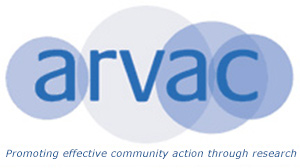ARVAC ROUNDTABLE : Authenticity, Relationships and Community Informed Research and Practice – Key Issues from the discussion on March 27 2005
ARVAC ROUNDTABLE : Authenticity, Relationships and Community Informed Research and Practice – Key Issues from the discussion on March 27 2005 Context Setting Two provocations were offered – one framing possible ways of thinking about locality as an organising principle and one which situated the cuts in Adult Learning as a lease through which to […]
ARVAC’S ROUNDTABLE ON ETHICS : WHY THEY MATTER
ARVAC’S ROUNDTABLE ON ETHICS : WHY THEY MATTER CONTEXT In February 2024 ARVAC hosted the third in a series of invited roundtable discussion focussing on the practice of working with community networks and organisations. This series which brings together experienced researchers from universities as well as experienced practitioners has explored a range of practice informed […]
The Research Circle – Community, democracy and dialogue through adult lifelong education
The Research Circle – Community, democracy and dialogue through adult lifelong education In 2018, a group of adult educators, recognising the historic importance of the 1919 Ministry ofReconstruction Adult Education Committee’s Final Report, set up the Adult Education 100 campaign.The campaign sought to encourage a programme of activities, centred on the centenary of the 1919Report, […]
Governance and Trustee engagement are all necessary but are we ready for challenges ahead ?
John Diamond ( ARVAC trustee ) In March this year ARVAC hosted a Roundtable discussion on the challenges facing trustees supporting voluntary sector organisations . We invited a group of people who brought a range of different experiences and roles : everyone was involved actively in working with or supporting voluntary and community sector organisations […]

ARVAC would like to highlight research by Nottingham Trent University
RESPOND – RESET – RECOVER Two Years On … ARVAC would like to highlight the research by Nottingham Trent University … ‘It is undoubtable that the Covid-19 pandemic has had a significant impact on the Voluntary, Community and Social Enterprise (VCSE) sector. From lockdowns, health and safety concerns, rising levels of demand and ongoing change and uncertainty, the pandemic transformed much of organisational life. This report tells the story of what happened during the pandemic within the VCSE sector.’ https://www.ntu.ac.uk/__data/assets/pdf_file/0029/1673741/Respond-Recover-Reset-Two-Years-On-2022.pdf
Amplifying Community Generated Evidence. Susanne Martikke. GMCVO
Like ARVAC, GMCVO has long realised the contribution that research led by community-based organisations can make to the wider research and policy landscape. Yet, from lack of capacity to lack of credibility, small-scale community-led research faces many challenges. The new guide “Good Evidence: a guide to help community organisations produce research that gets taken seriously”, […]
ARVAC STATEMENT ON ANTI-RACISM
ARVAC – Our commitment to anti-racism We are an organisation entirely run by volunteers, membership is free and there are no restrictions on joining. With a mission to bring together academics, practitioners and policy makers we have supported community groups to do research themselves, even with limited time and resources, for over 40 years. We […]
ARVAC AGM. 2021
We are looking forward to the ARVAC AGM. Members are cordially invited to the rescheduled ARVAC AGM 2021 About this event We’d like to invite you to our rescheduled 2021 Annual General Meeting (AGM) on Thursday 16th December. The AGM will take place online from 11:00am – 12:30pm and you’ll receive a zoom link for […]
ARVAC and me – Jayne Humm When did you become a member of ARVAC and why? I became a member of ARVAC when I worked for the Community Development Foundation- that must have been about the late 1990s. I joined because there weren’t at the time- and there still isn’t- many networks involving researchers in […]
40 Years on: What is different and why do we need ARVAC
40 Years on: What is different and why do we need ARVAC Anniversaries of any kind give us the opportunity topause – look back (perhaps) and reflect. 2018 has marked the 40thbirthday of ARVAC. And it is interesting to look back and think about what haschanged and what has remained the same . On one […]
